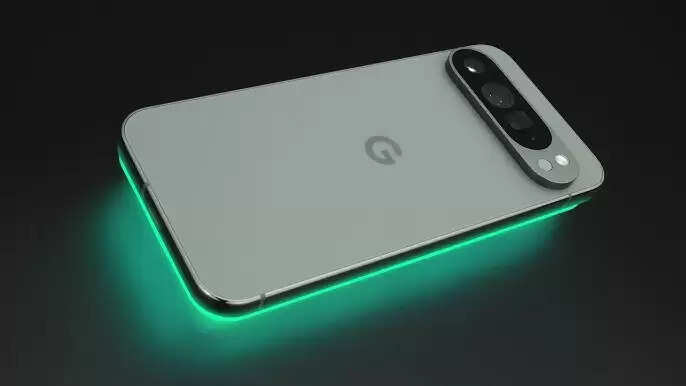Google Pixel 9 XL Powerhouse smartphone with Google Tensor G4 Processor and 5060 mAh Battery

Google Pixel 9 XL: Given all the hype surrounding Google's flagship phones in recent years, I was particularly eager to get my hands on the Pixel 9 XL. After two weeks of using it as my primary device, I can confidently say this represents Google's most complete hardware effort to date—though it's not without some characteristic quirks and compromises.
First, a bit of background. The Pixel line has always prioritized software innovation and camera performance over raw specs and flashy hardware. The Pixel 8 series made significant strides with the Tensor G3 chip and expanded AI capabilities, but battery life and thermal management remained persistent issues. With the 9 XL, Google promised to finally address these fundamental weaknesses while pushing their AI advantage even further.
Design: Refined Yet Recognizable
The Pixel 9 XL maintains Google's distinctive aesthetic but with welcome refinements. The frame is now titanium (following Apple's lead from the iPhone 15 Pro), making the device lighter and more durable than previous aluminum-framed models. The camera bar, a Pixel signature since the 6 series, has been redesigned to be less prominent while still housing the impressive camera array.
Here's where things get a little more controversial. While most flagships have moved to completely flat displays, Google has opted for a subtle curve along the edges—not the dramatic waterfall design of years past, but enough to make edge swipes more comfortable. It's divisive, but I've found it makes the large 6.8-inch display more manageable in one hand.
The color options this year include the standard Obsidian black and Porcelain white, along with more playful "Sage" green and "Coral" orange variants. The matte glass back is a fingerprint magnet on the darker colors but feels premium and resistant to scratches based on my testing.
Funnily enough, Google has finally addressed one of my long-standing complaints by improving the under-display fingerprint sensor. The ultrasonic sensor they've adopted is noticeably faster and more reliable than the optical sensors used in previous Pixels, especially in low light or with damp fingers.
Display: Finally Best-in-Class
The 6.8-inch LTPO OLED display is simply stunning. With 3120 x 1440 resolution, variable refresh rate from 1-120Hz, and peak brightness of 2,500 nits, it finally matches or exceeds the best screens from Samsung and Apple. Colors are vibrant but accurate in the "Natural" display mode, and viewing angles are excellent.
This is also controversial. Google has implemented a new "Active Display" feature that keeps certain pixels lit even when the screen is "off," showing not just time and notifications but also contextual information like weather alerts, upcoming calendar events, and even the title of a song playing nearby. It's genuinely useful but raises questions about potential screen burn-in over time.
The display is protected by Corning's latest Gorilla Glass Victus 3, which has proven durable in my two weeks of use without a case. The anti-reflective coating is also noticeably improved, making outdoor visibility much better than on previous Pixels.
Performance: Tensor G5 Brings the Heat (or Rather, Doesn't)
The custom Tensor G5 chip represents Google's most significant hardware improvement. Built on TSMC's 3nm process (a long-awaited shift from Samsung's less efficient manufacturing), it delivers approximately 30% better CPU performance and 40% better GPU performance than the G4, while consuming significantly less power.
There's another sticking point. While benchmark scores still trail the latest Snapdragon and Apple chips in raw performance, the real-world experience is excellent. Apps open instantly, complex web pages render quickly, and even demanding games run smoothly. More importantly, the phone stays cooler under load—a welcome change from previous Pixels that would heat up during camera use or navigation.
The 16GB of LPDDR5X RAM ensures smooth multitasking, and storage options now start at 256GB (with 512GB and 1TB tiers available). Google still doesn't offer expandable storage, but the base model's capacity is finally generous enough that most users won't need to worry about running out of space.
Battery Life: The Pixel's Achilles' Heel No More
Battery life has been the persistent weakness of the Pixel line, but the 9 XL finally breaks that curse. The 5,500mAh battery easily lasts a full day of heavy use, and moderate users can expect to go into a second day without charging. In my testing, I consistently ended days with 30-40% remaining after 5-6 hours of screen time including photography, navigation, and social media use.
Speeding up the charging capability was clearly a priority for Google this year. The Pixel 9 XL supports 45W wired charging (up from 30W) and 23W wireless charging with the Pixel Stand. A full charge takes about 70 minutes with the wired charger, though Google still doesn't include a charger in the box.
Battery health features have been expanded, with a new "Adaptive Charging" system that learns your usage patterns and adjusts charging behavior to minimize battery degradation. Google also promises five years of battery health, with the battery maintaining at least 80% of its original capacity during that period.
Camera System: Computational Photography Evolved
The camera system builds on Google's computational photography prowess with some meaningful hardware upgrades:
- Main: 50MP f/1.7 with larger 1/1.3" sensor
- Ultrawide: 48MP f/2.2 with 120° field of view
- Telephoto: 48MP f/2.8 with 5x optical zoom
- Front: 12MP f/2.2 with autofocus and wider 95° field of view
The larger sensors capture more light, producing cleaner low-light images with better dynamic range. The telephoto lens now uses a variable focal length system that can smoothly transition between 3x and 5x optical zoom, addressing the gap in the zoom range that plagued previous Pixels.
This is also controversial. While competitors have pushed to 200MP sensors and 10x optical zoom, Google continues to emphasize that computational photography can deliver better results with more modest hardware specs. And for the most part, they're right—the Pixel 9 XL produces phenomenal photos in almost any situation.
The new "Pro Controls" mode finally gives photography enthusiasts manual control over ISO, shutter speed, focus, and more. It's well implemented and intuitive, though Google's computational magic still provides the best results most of the time.
Video capabilities have seen significant improvement, with support for 8K/30fps recording and 4K/120fps slow motion. The video image quality still doesn't quite match the iPhone's, but the gap has narrowed considerably. The "Video Magic Eraser" feature, which can remove unwanted objects or people from videos, works surprisingly well for simple cases but struggles with complex backgrounds.
Software: AI Everywhere
The Pixel 9 XL runs Android 16 with Google's Pixel experience, guaranteed for seven years of OS and security updates. The software experience remains one of the Pixel's strongest selling points—clean, intuitive, and free from bloatware.
AI features have expanded significantly, now integrated throughout the system rather than just in specific apps. The "AI Core" framework allows for more processing to happen on-device, improving both privacy and performance. Some standout features include:
- Gemini Live: A conversational AI assistant that can maintain context across days and handle complex, multi-step tasks
- Circle to Search Pro: An enhanced version that can now search for objects in the real world through the camera
- Audio Magic Eraser: Removes specific sounds from videos or voice recordings with impressive accuracy
- Live Translate: Now works offline for 20 languages and can translate group conversations in real-time
- Photos Reimagine: Generates alternative versions of your photos with different styles, lighting, or compositions
As impressive as these features are, the question remains: how many people will actually use them regularly? Many of Google's AI showcases from previous years ended up being novelties rather than essential tools.
Other Features Worth Noting
- Connectivity: Wi-Fi 7, Bluetooth 6.0, UWB, and satellite connectivity for emergency messages
- Biometrics: Improved ultrasonic fingerprint sensor and more reliable face unlock
- Audio: Stereo speakers with 30% louder output and better bass response
- Durability: IP68 water and dust resistance
- Sustainability: Made with 100% recycled aluminum and increased use of recycled materials throughout
Pricing and Availability
The Pixel 9 XL starts at $1,099 for the 256GB model, with the 512GB and 1TB versions priced at $1,199 and $1,399 respectively. That's a $100 increase over the Pixel 8 Pro's launch price, putting it in direct competition with Samsung's Ultra and Apple's Pro Max models.
Pros and Cons
Pros:
- Exceptional camera system with improved hardware and software
- Vastly improved battery life and thermal management
- Premium build quality with titanium frame
- Stunning display with useful always-on features
- Clean software experience with seven years of updates
- Cutting-edge AI features that are genuinely useful
- Finally competitive charging speeds
- Improved biometrics with faster fingerprint sensor
Cons:
- Still expensive at $1,099 starting price
- Some AI features feel more like tech demos than essential tools
- No expandable storage option
- No charger included in the box
- Slightly curved display will disappoint flat-screen purists
- Video quality still trails iPhone slightly
- Manual camera controls, while welcome, are somewhat limited
- Titanium only in the frame, not the entire chassis
The Verdict: Google's Most Complete Phone Yet
As a result, it's impossible to predict exactly how the market will respond to the Pixel 9 XL. What's clear is that Google has finally addressed the fundamental weaknesses that held previous Pixels back from mainstream success. Battery life, thermal management, and build quality are no longer compromises you have to accept to get the Pixel experience.
The camera system remains a standout feature, now complemented by meaningful hardware improvements that enhance Google's computational photography magic. The new Tensor G5 chip delivers excellent performance while maintaining efficiency, and the display finally matches the best in the industry.
For Android enthusiasts who value clean software, cutting-edge AI features, and exceptional photography, the Pixel 9 XL is an easy recommendation despite the premium price. For those coming from other flagship devices, Google has removed most of the barriers that might have given you pause in previous years.
The question now isn't whether the Pixel 9 XL is a good phone—it clearly is—but whether Google can leverage these improvements to finally break through to the mainstream market that has long been dominated by Samsung and Apple. With the 9 XL, they've certainly given themselves their best shot yet.
